Coming from the Galapagos our thirst for wildlife seemed unsatisfied and we decided to take a 1000km trip (back and forth) to go whale watching. The season for seeing humpback whales was still on and since we were earlier on this trip at good whale watching locations at the wrong time we didn’t want to miss out on this occasion. We headed to Puerto Lopez.
A ride from mountains and snowcapped volcanoes through cloud forest to end at the beach. Puerto Lopez is a small beach town famous for whale watching from July to October. October is clearly less busy: we were one of the two boats that left the harbour that day while we saw many more empty ones floating around. We (and the whales) were lucky!
Shortly after disembarking we saw the first ones clearing their blowhole from the distance. The boat approached a little and turned the engine down… There they were: the humpbacks!
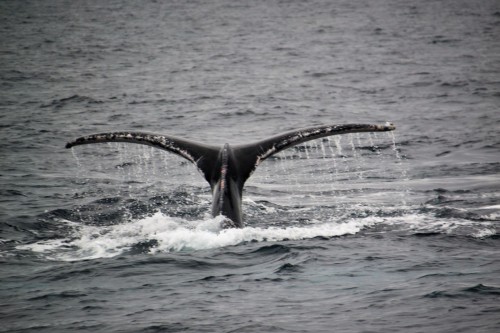
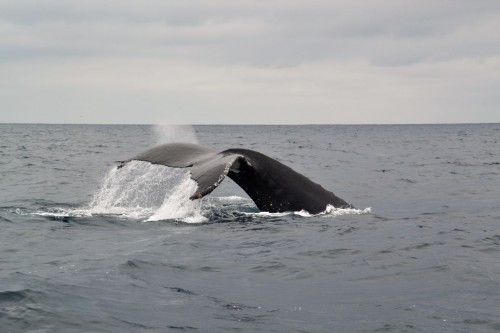
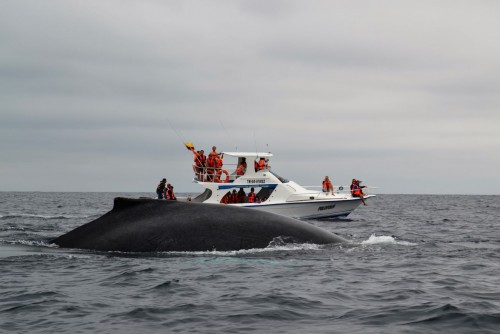
Did you know?
Humpback whales migrate each year from the south and north pole to the area between Mexico and Ecuador to mate and breed. The adults can grow to 16 meter and their calves are up to 4 meter around birth. This is the size of a bus and car respectively. In mating month (end of July – beginning of August) they often jump to impress the ladies. As we were in October we saw mainly backs & tails, but still very impressive!
For us it was totally worth the 1000km detour! We even considered to take the boat trip again the day after ;-). Seeing these enormous animals at the surface breathing and showing their gracious tail when it went down made us feel very happy and humble. Céline was even lucky to see one jumping about 20m behind my back! By the time my senses could interpret there was something behind my back which made Céline yell “wooow” and I could stimulate my head to turn, I could only glimpse the enormous splash it made. Like they dropped a 30 ton truck into the water. I can only imagine how amazing that must have looked. Lucky Céline, jealous me!
Seeing whales: mission accomplished!
Next, we drove up to Mindo, a small town in a cloud forest valley. It is famous for birds & butterflies and nice hikes in the forest. We didn’t take a bird watching tour since we planned a hike to some waterfalls and we thought we would see birds all over the place. Not! We saw one Toucan-like bird, one hummingbird and some other small birds and that was it 🙂 . The fact we didn’t go at the break of dawn when the animals are most active, and that we aren’t experienced bird watchers might have something to do with it. That explains why they ask a ridiculous amount of money for a tour with a bird watching guide.
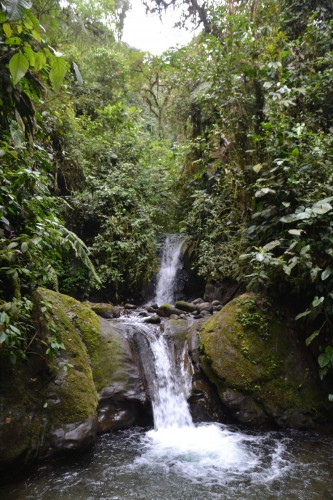

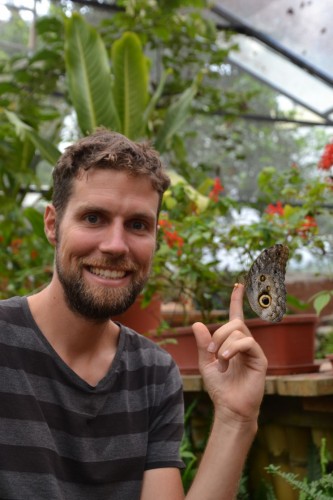
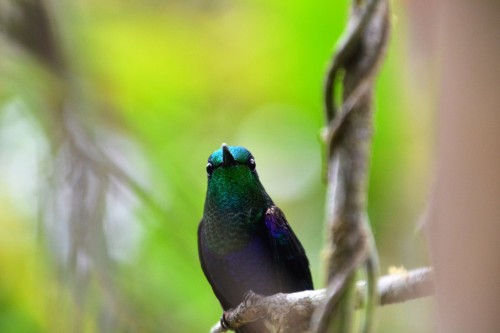
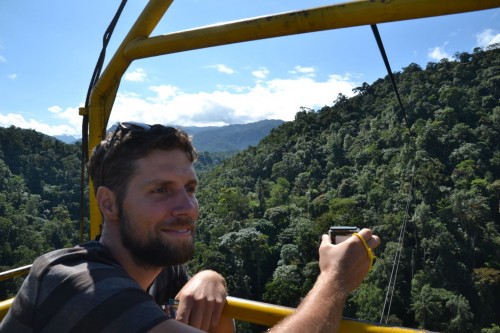
But hey, the cable car we had to take across the valley was worth the whole hike. A car engine powered cable car which still had to be handled like a car: shifting gears, pushing the throttle and using the break paddle to stop the cable. Very inventive.
In Mindo we stayed at a nice place with a swimming pool and met some other Overlanders who were on their way down to Patagonia: an English and an Australian couple. They told us about a nice place to camp further north: a high lake surrounded by some extinct volcanoes. Tips from other travelers are often good ones, so we checked it out and they didn’t lie. We were completely alone and did a steep hike to the top. Very nice view!
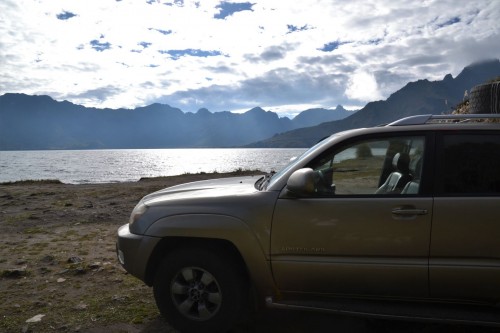
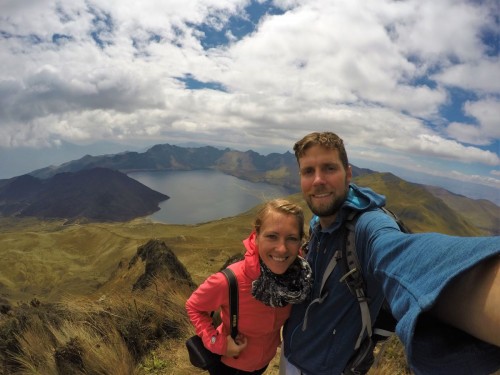
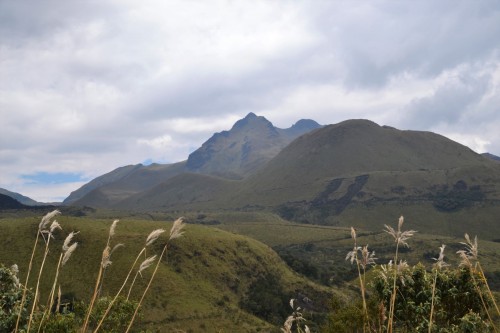
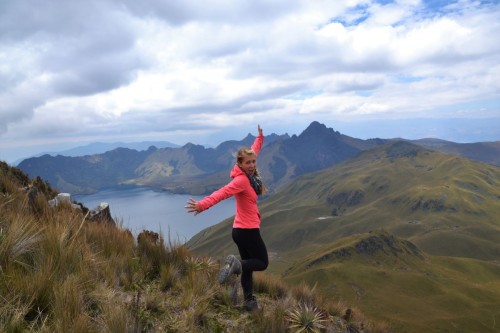
We couldn’t leave Ecuador without seeing the actual equator, so we visited “El mitad del mundo” where we did some fun experiments: walking on a line with your eyes closed (this is actually harder on the equator than anywhere else), balancing an egg on the head of a nail (this is easier), and observing how water flushes in opposite direction on the northern and southern hemisphere. It’s debatable which experiments are real and which are tourist traps, but we had fun nevertheless.
Did you know?
Ecuador has actually 2 equators. The official big monument (which we didn’t visit to save a few dollars) is actually a few hundred meters away from the real equator. This was caused by a French expedition that marked the wrong spot and the mistake wasn’t realized until the GPS was invented (but they weren’t far off!). Unfortunately, the Ecuadorian government had already built a huge monument & small museum on this spot.
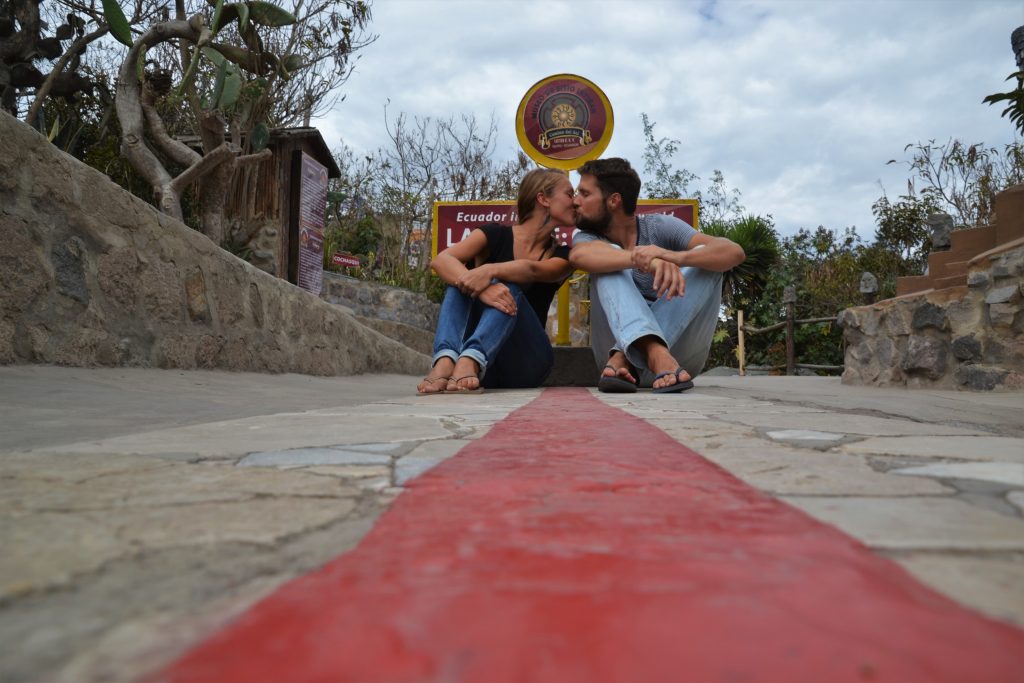
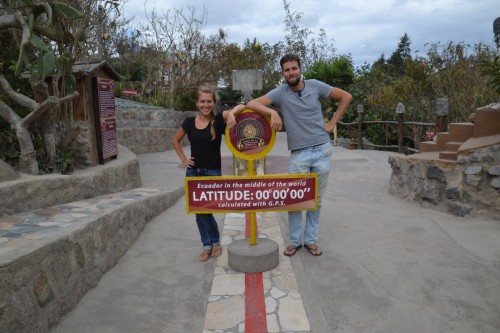
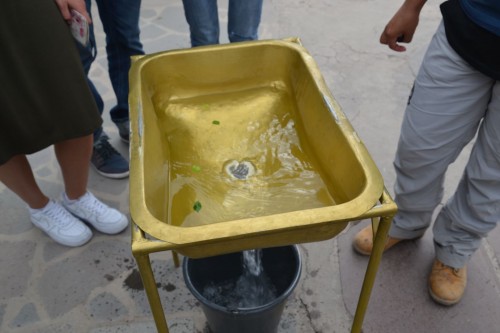
And so we were ready to leave Ecuador (for now), but Ecuador wanted to keep us a bit longer: it took us 2,5 hours to get the exit stamp in our pasports. The joys of traveling!
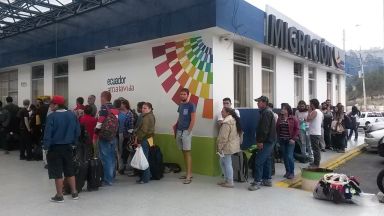
Goodbye Ecuador, hello Colombia!
